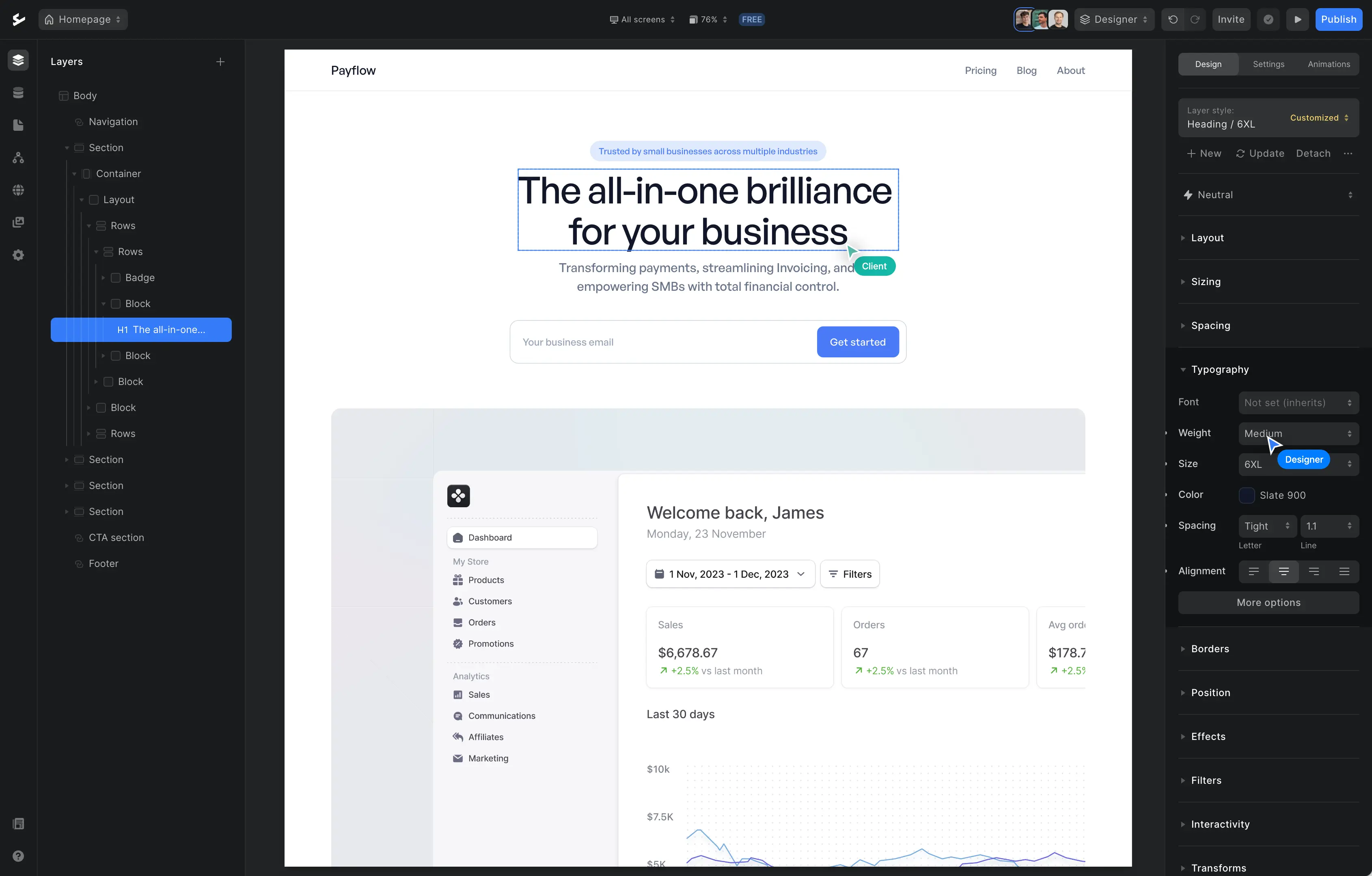
Two years ago, I set out to learn how to code. With a background in design and a working knowledge of HTML and CSS, I could create beautiful designs, but I couldn’t build more complex digital products on my own. I was dependent on developers whenever I needed a project with users, databases, or integrations. I wanted more autonomy, so I began my own coding journey.
Starting with high hopes, I quickly encountered the challenges that come with learning to code. As I navigated them, I couldn’t shake the feeling that there had to be an easier, more intuitive way to bring ideas to life—something that combined flexibility, accessibility, and the power of code but without the technical barriers. And so, the idea for Ycode was born.
Our Initial Vision and How It’s Evolved
At first, our focus with Ycode was on building a tool that would allow anyone to create web apps without code. The initial idea was a visual editor for web app functionality with real, production-quality code generated in the background. We wanted to empower non-developers to create feature-rich, interactive applications.
However, over time, we realized that most of our users were focused on creating beautiful, custom websites rather than full-fledged web apps. They needed a powerful tool for building visually stunning, functional websites—without diving into code. As a result, we pivoted our focus: Ycode is now dedicated to website building, not web app development. Our mission is to offer a website builder that combines the flexibility and depth of coding with the ease and speed of visual design.
Why Ycode? Filling a Gap in the Market
We built Ycode because we see a need for a website builder that is affordable, powerful, and provides users with full control over their designs and functionality. There are countless website builders out there, but they often fall short in one area or another. Many are prohibitively expensive, while others are difficult to use or have significant limitations in customization and features. We want Ycode to solve these issues by offering an intuitive yet robust platform that empowers creators without forcing them to compromise on design or functionality.
With Ycode, we’re creating a tool that combines affordability with full creative control, allowing users to bring their websites to life without sacrificing design flexibility or functionality.
Building a Website with Ycode: The Solution We Created
With Ycode, we’re reimagining website development as an intuitive, visual experience. Ycode’s visual editor allows you to design websites without coding, but in the background, it’s generating clean, production-ready code.
We use Tailwind CSS in the frontend to ensure efficient, responsive designs. By translating visual decisions into clean code, Ycode enables you to create websites that are professional-grade and scalable.
Our website builder is fully equipped for dynamic sites, with databases for storing and managing content and APIs for integrating data from external sources. You can create interactive forms to gather data, build out custom pages, and fully control the design and functionality of your site.
What’s Next? We Want Your Feedback!
Ycode has come a long way, but we believe that the journey is just beginning. Our goal is to keep evolving Ycode to meet the needs of our users and to build a website creation platform that truly empowers you to create without limits.
As we continue to improve and expand Ycode’s capabilities, your feedback is invaluable to us. We want to hear from you! Whether it’s new features you’d like to see, improvements to existing tools, or any feedback on your experience, your insights will help us shape the future of Ycode.
Join our community to connect with other Ycode users, share your ideas, and collaborate with us as we work to make Ycode even better. You can also follow us on Twitter @ycodedotcom and sign up for our newsletter for the latest updates.
Get your project started today
Discover our intuitive visual editor, use built-in CMS collections, SEO features and launch your web projects with ease.

